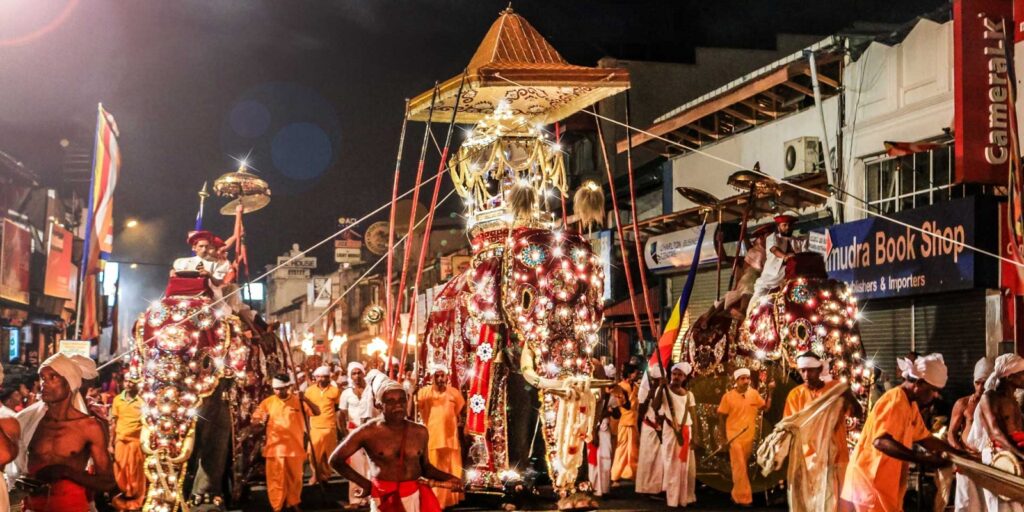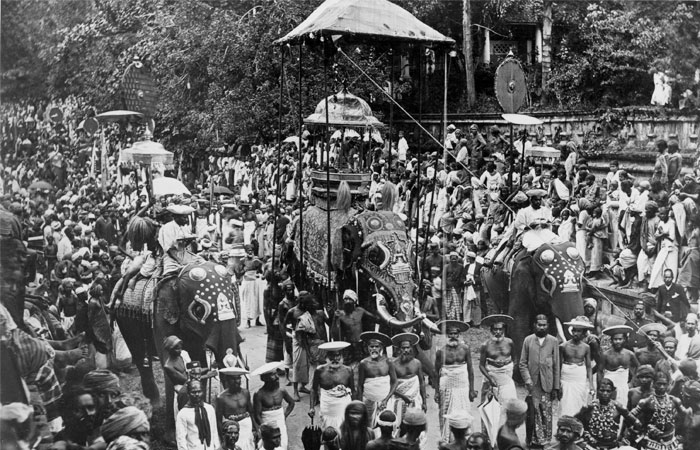
The Esala Perahera in Kandy is one of the oldest and grandest of all Buddhist festivals in Sri Lanka, featuring dancers, jugglers, musicians, fire-breathers, and lavishly decorated elephants. This is held in Esala (July or August) which is the month that is believed to commemorate the first teaching given by the Buddha after he attained enlightenment. The Kandy Esala Perahera lasts for ten days while various festivities can be witnessed right throughout. The Sinhalese term ‘Perahera’ means a parade of musicians, dancers, singers, acrobats and various other performers accompanied by a large number of caparisoned Tuskers and Elephants parading the streets in celebration of a religious event.
This ritual is performed by carrying the sacred tooth relic of the Buddha through the streets of the Kandy city which is done with exceptional panache. This is considered as one of the most beautiful pageants in the Asia.
The first ritual ‘Kap Situweema’ (planting of a sanctified young Jackfruit Tree) will be held to commence the rituals that start off Perahera. The ritual is performed according to an auspicious time decided by astrologers. The Jackfruit tree is sprinkled with sandalwood scented water and offerings are is made of nine kinds of flowers and an oil lamp with nine wicks. The priest of the Maha Vishnu Devale (Vishnu Temple) recites his prayers to all the gods.
History of the Kandy Perahera
Old Ceylon Kandy Perahera – the Kandy Perahera originates with the arrival of Prince Dantaha and Princess Hemamala, the son-in-law and daughter of King Guhasiva of Kalinga in India to Sri Lanka during the reign of King Kirthisiri Meghawanna (305-331 AD). Following the decree of King Kirthisiri Meghawanna that the Relic should be taken round the city of Anuradhapura once a year, the Esala Perahera had been followed by the succession of kings, though with interruptions caused by foreign invasions.
The most revealing narration of the Esala Perehera is found in the book written by the Chinese pilgrim ‘Fa Hien’ who visited Sri Lanka in the 5th century A.D. The sporadic invasions by the Dravidian Kingdoms resulted in the shifting of the seat of the kingdom from Anuradhapura to Polonnaruwa, then to Dambadeniya and thereafter to other cities. In each retreat, a new temple was constructed to enshrine the Sacred Tooth Relic. Finally, after the shift of the capital to Kandy, the Relic has been undisturbed. ever since and the Esala Perahera has been held annually to rejoice and honour the Sacred Tooth Relic.

